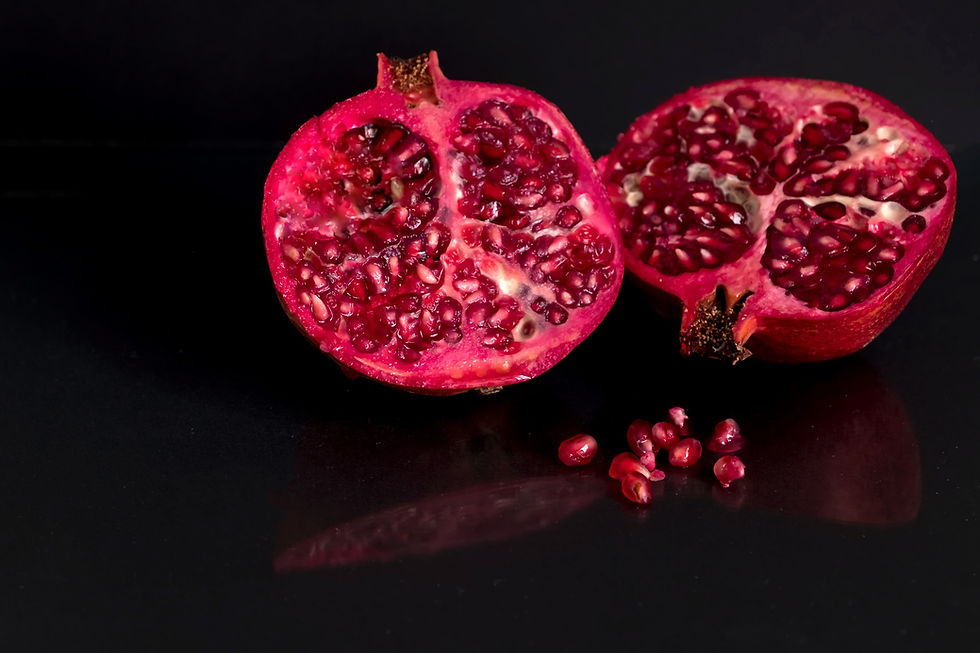Forbidden Fruit
- Sarah Williams

- Sep 16, 2020
- 3 min read

This week leading up to the fall feasts we have been teaching the kids about creation from Genesis 1. It is apropos to look back to the beginning of pure fellowship with God in His perfect garden and Holy Presence. His first act in the creation narrative was to "invite" His presence, his Holy Perfect LIGHT, and to separate himself from the darkness that loomed threatening to spoil creation and hold it in chaos. Through the fall feasts we catch a glimpse of God's heart to restore that perfect relationship and garden fellowship that we started with through the triumphal return of His Son, Messiah Yeshua and the ushering of eternal bliss in heaven where again there will be no death, or tears. (Revelation 21:4 ) It is a theory that it was a pomegranate that was the forbidden fruit from the tree of Knowledge of Good and Evil. And so the Pomegranate has become a central fruit in celebrating the Fall Feasts. It is a fruit of passion and restraint, a fruit of burden, and a fruit of beauty pointing to a royal inheritance.

In many cultures the Pomegranate is the fruit of love. It much resembles the look of a heart with its many chambers and drips with the color of blood staining anything it touches . It is unlike most other fruits requiring much delicate attention to open and taste even a single seed without bruising or squishing the fruit. It is sweet to the taste and satisfying. A pomegranate requires restraint, as you cannot eat it hastily or gobble with big bites, but only with time, patience and care.

In rabbinical judaism, it is taught that each pomegranate contains 613 seeds to account for every command found in the Torah which came as a result of mankind's first sin and fall eating the forbidden fruit. (We had a fun "math" activity counting a pomegranate this year. You can read about it here). When we open the Pomegranate we are reminded of the many many burdens and laws that God gave us to sanctify us and keep us from sinning. And yet when we eat the seeds they are sweet and light recalling David's words that (Psalm 19: 7-10) and also Yeshua's promise that His Yoke is easy and His burden is light (Matthew 11:28-30).

Finally, the Pomegranate points us to eternity with its beauty. Even from its outer form, its flower bulges into the fruit but remains as a crown fit for the kings and queens of God's kingdom. Once peeled open, a treasury of illusive gems rains down on a triumphant victor ready to indulge in the spoils and feast on God's artful goodness. It is a picture of God's abundance and faithfulness, and how in his presence the most precious of jewels and metals will pale and become common. What a wonder that I cannot even fathom that gates of cities made from pearls, and foundations built on gems and the most common streets paved with GOLD, the most precious metal we elevate in our world. (Revelations 21:19-21)
As we celebrate Yom Teruah, let us look at the Pomegranate as a picture of the salvation God provided for us in our fallen world and our hope of the beauty and Holy communion that is to come in God's sweet presence when He returns to claim his Bride.





Comments